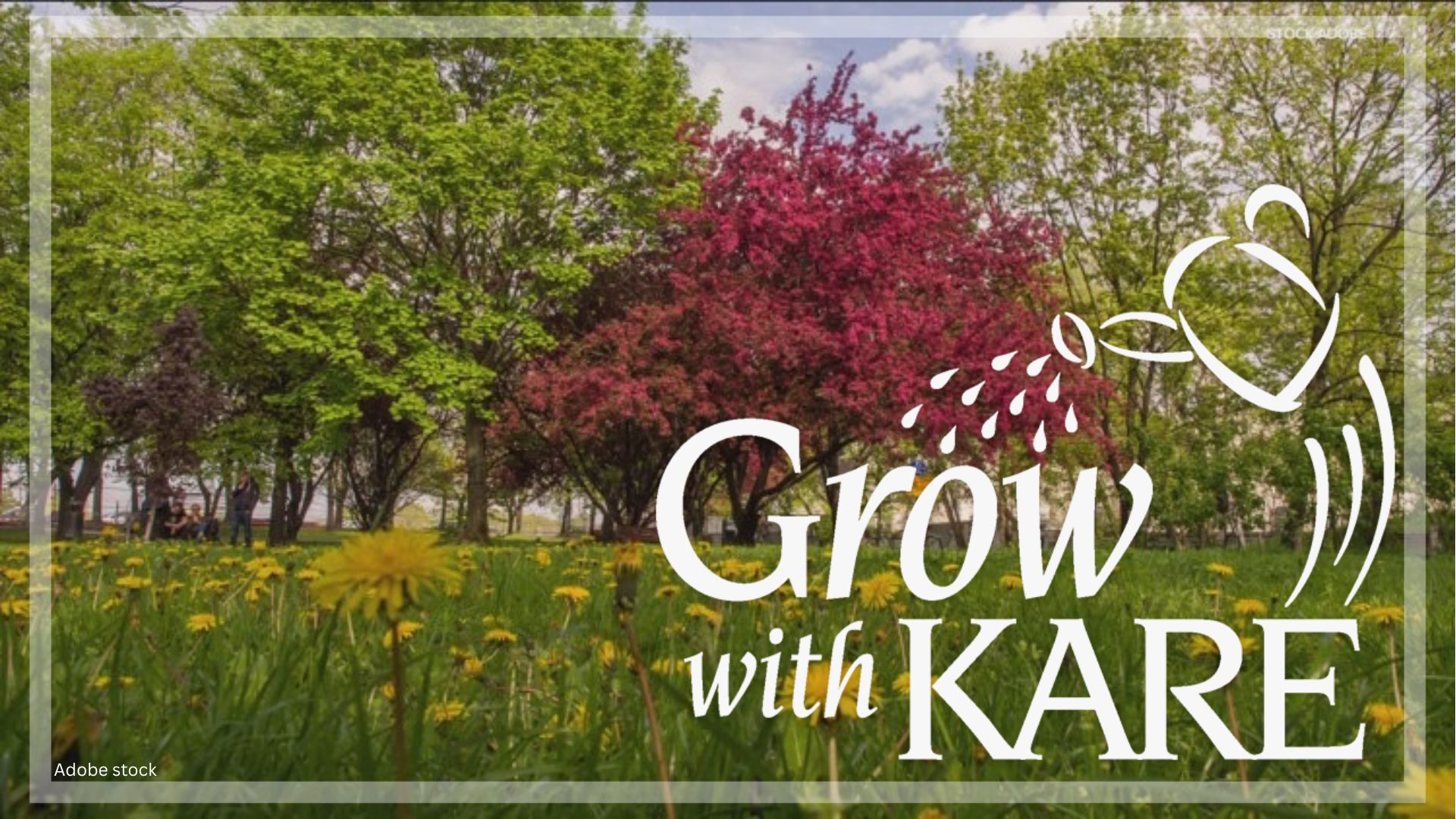CHASKA, Minn. — With all the wet weather we've had this growing season, lots of crabapples are looking bad. A big part of that is the fungal disease called apple scab, which impacts both leaves and fruit.
There are, however, some BEAUTIFUL crabapple varieties that are resistant to disease. Experts at the Minnesota Landscape Arboretum shared their favorite varieties which the U of M has identified as being disease resistant to scab and other issues as well. Those experts include Mary Meyer, Audrey Busch and Nick Kreevich.
Our arboretum advisors recommend these five crabapple trees (three white, two magenta) as favorites. Note that "disease resistant" does not mean they are immune to apple scab. When conditions are ripe, even resistant trees may exhibit some symptoms of the disease. Learn best practices for dealing with this year's scab on the U of M website.
First, the WHITE varieties:
Adirondack
offers red-pink flower buds that open to white. It stands out for its strongly upright, almost columnar form with one of the heaviest flower displays among crabapples.
- Size: 12-18 feet high and 6-10 feet wide
- Form: Narrow, upright form
- Flowers/Fruit: white flowers; orange-red fruit
- Disease resistance: scab (excellent), fireblight (excellent), rust (excellent), mildew (excellent)
Find it at the Arb: We have specimens at the Learning Center/Green Play Yard, the Cloistered Herb Garden and on both sides of the Crabapple Collection.
Donald Wyman
offers red-pink flower buds that open to white. It produces glossy red fruit, and its form is the classic weeping crabapple shape with heavy flowering.
- Size: 20 feet high and 20 feet wide
- Form: Rounded form
- Flowers/Fruit: White flowers; red, persistent fruit.
- Disease resistance: scab (good), fireblight (excellent), rust (excellent), mildew (good)
Find it at the Arb: There’s a mass planting (16 mature trees) between the Oswald Visitor Center and the main parking lot, and we have a single specimen in the Crabapple Collection.
Tina
Offers red-pink flower buds that open to white (with yellow centers) with dark-green, lobed foliage with a fine texture; fruit looks like tiny red berries; it is a smaller-space variety and is also salt tolerant.
- Size:: 3-4 feet high and 5-6 feet wide
- Form: Spreading
- Flowers/Fruit: White flowers; red fruit.
- Disease resistance: scab (excellent), fireblight (excellent), rust (excellent), mildew (excellent)
Find it at the Arb: We have a few specimens in the Crabapple Collection where Three-Mile Walk crosses Three-Mile Drive near the sculpture garden.
Now, the PINK varieties:
Prairifire (spelled Prairi without the E)
Offers vibrant magenta blooms with red-maroon foliage that matures to dark green with a purplish overcast, and its form is the classic weeping crabapple shape. In fall, the foliage turns an excellent red-orange (hence the name) followed by 1/2" deep purple-red fruits that stay on the tree in winter.
- Size: 20 feet high and 20 feet wide
- Form: Upright, rounded form
- Flowers/Fruit: Dark red flowers; purplish-red fruit.
- Disease resistance: scab (excellent), fireblight (excellent), rust (excellent), mildew (excellent)
Find it at the Arb: There’s a large planting in the Sensory Garden, and we have a few specimens in the Crabapple Collection.
Purple Prince (Magenta)
A small rounded tree with deep purple-green foliage and cherry-like bark. Cherry-red buds open to bright rose-red flowers that turn into lasting fruit that is about 1/2" in diameter.
- Size: 18-20 feet high and wide
- Form: Rounded
- Flowers/Fruit: rose-red flowers; maroon fruit.
- Disease resistance: scab (good), fireblight (good), rust (excellent), mildew (excellent)
Find it at the Arb: There’s a specimen in the Wilson Rose Garden, and a few specimens in the Crabapple Collection.
BONUS
Other Arb favorites include Snowdrift, Rudolph, Professor Spenger, Red Barron, Red Splendor and Rejzam (Rejoice™)
For further reading on crab apples and apple scab:

